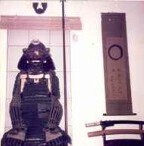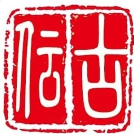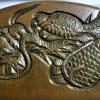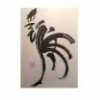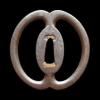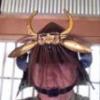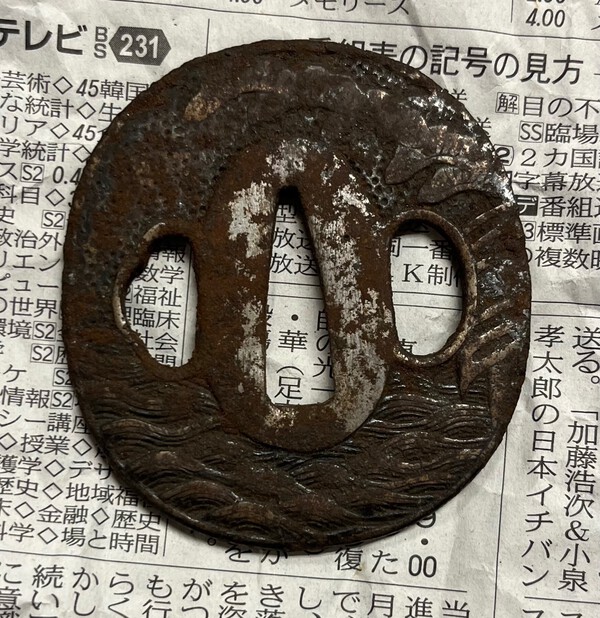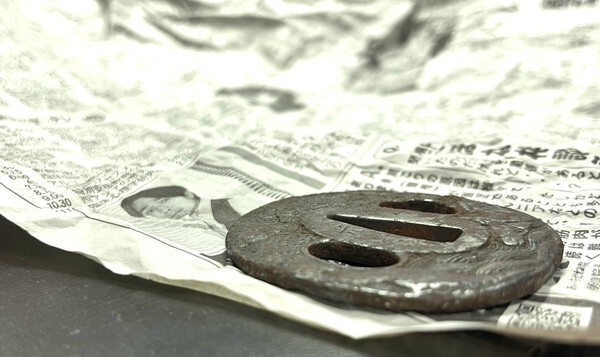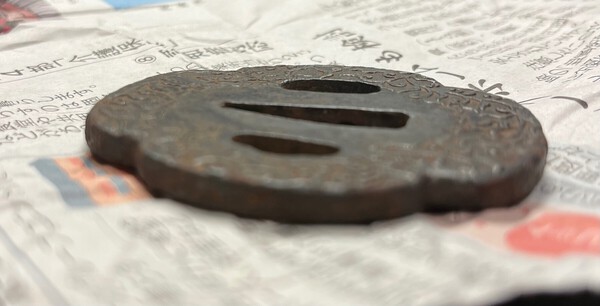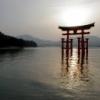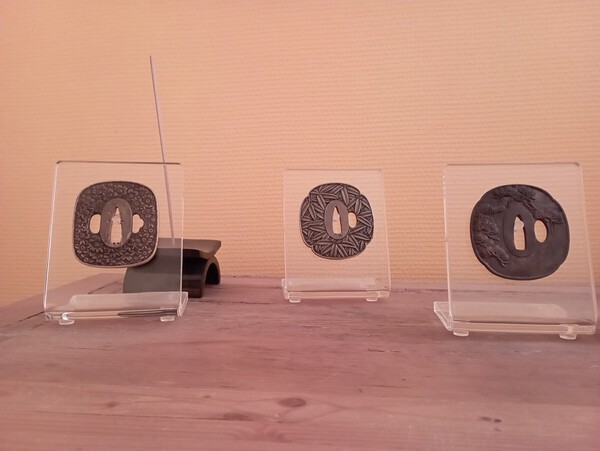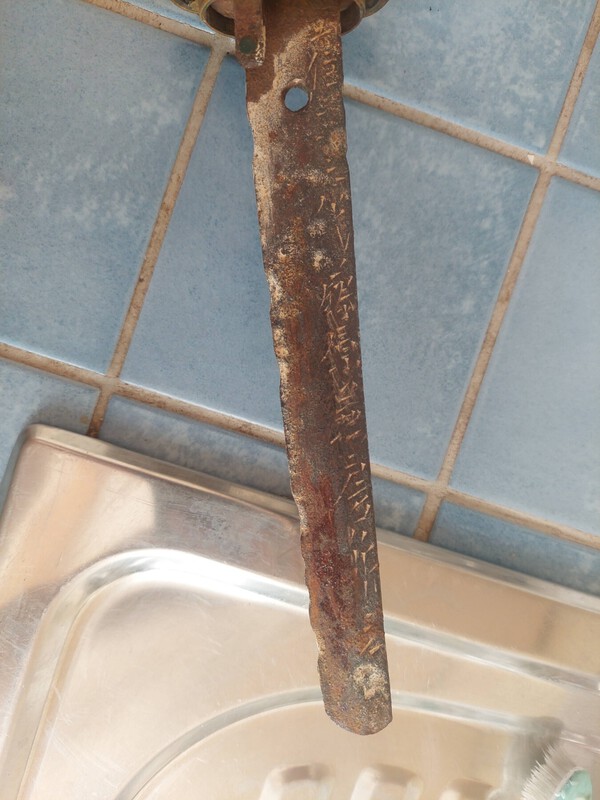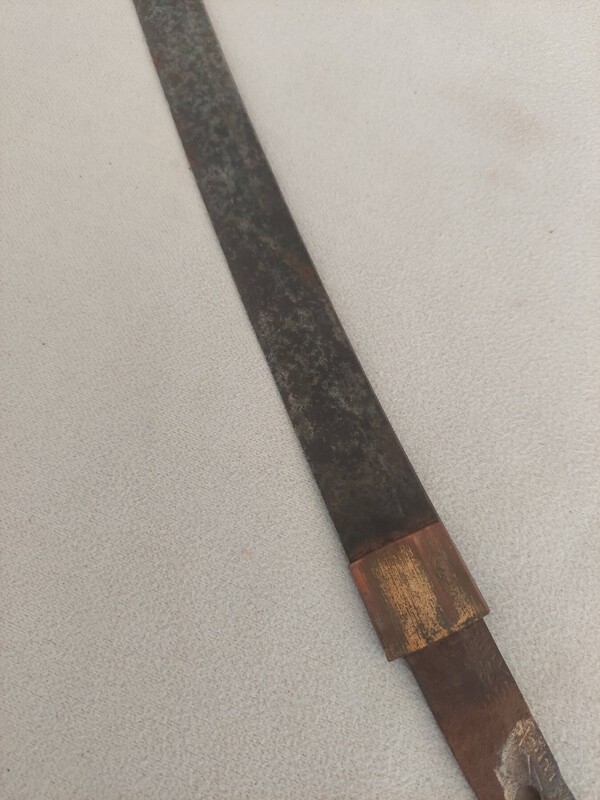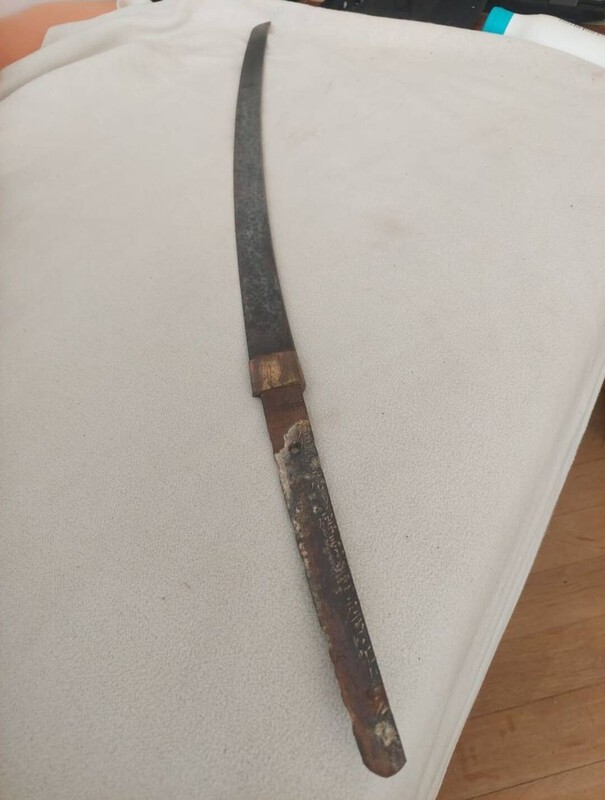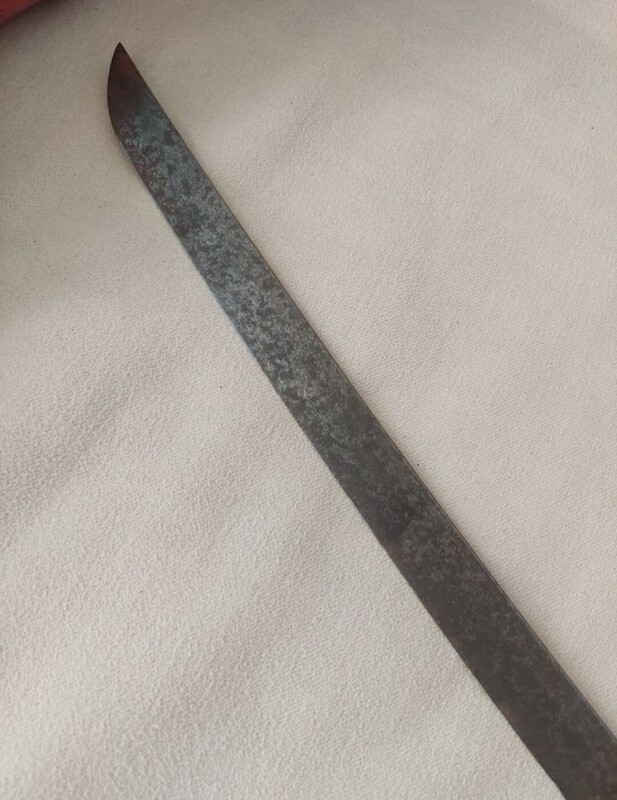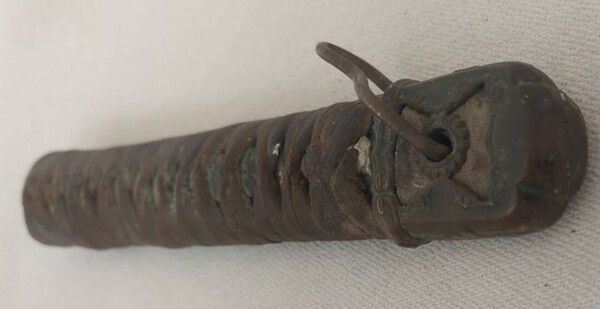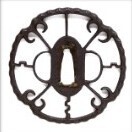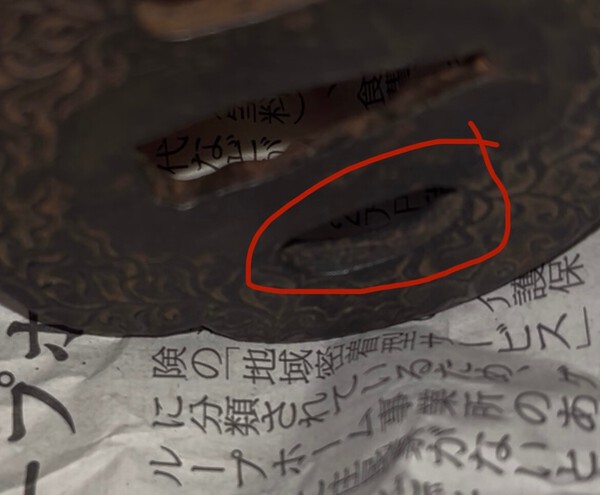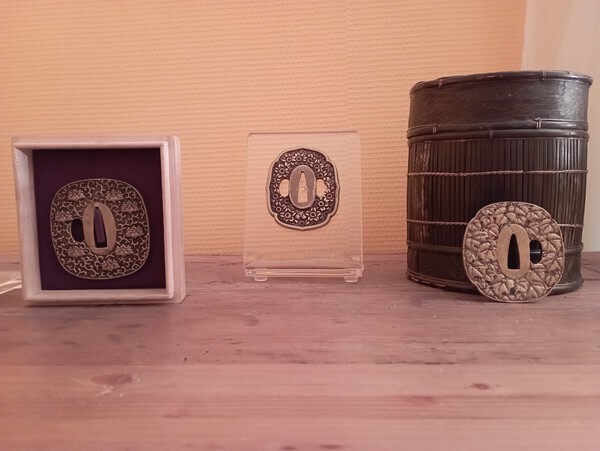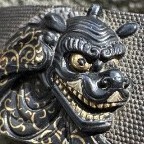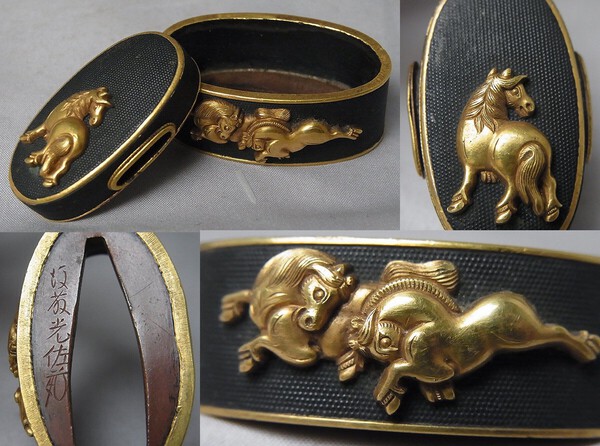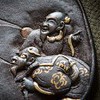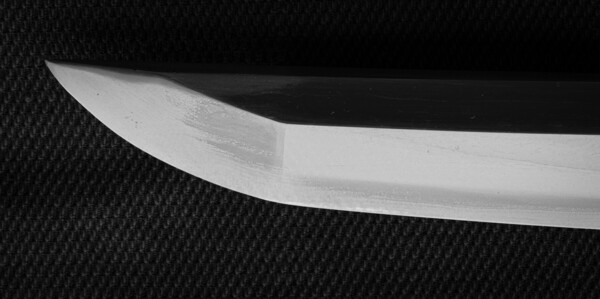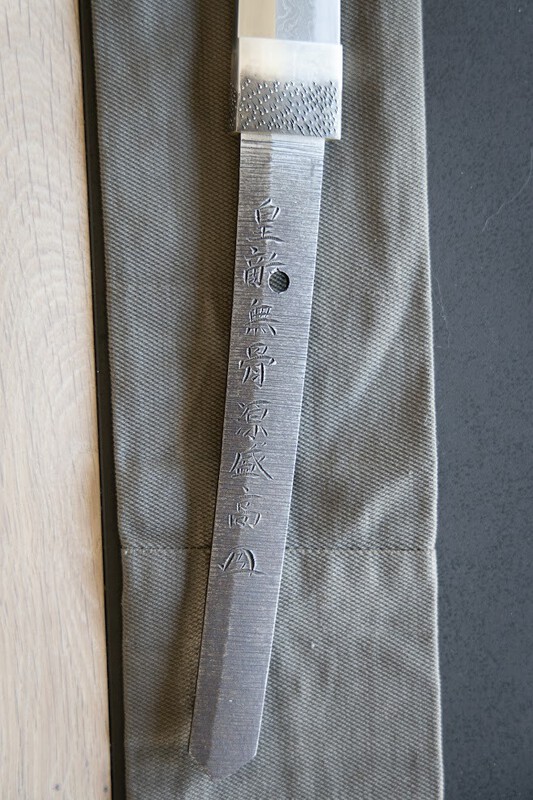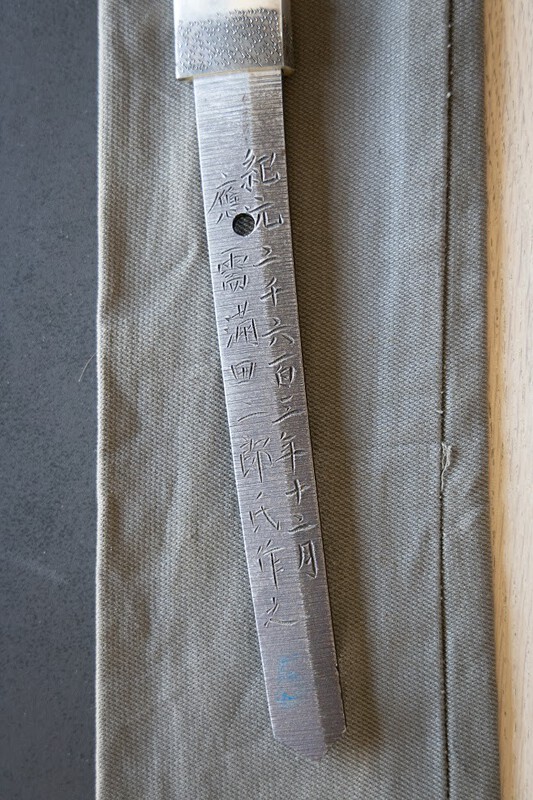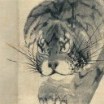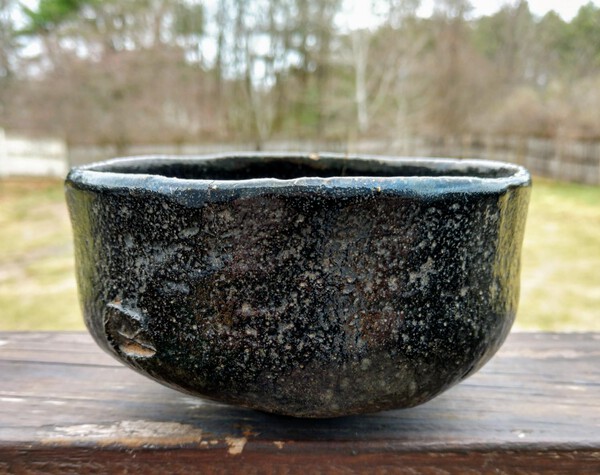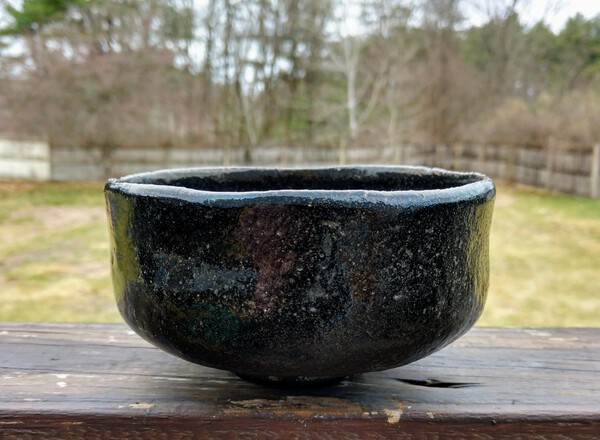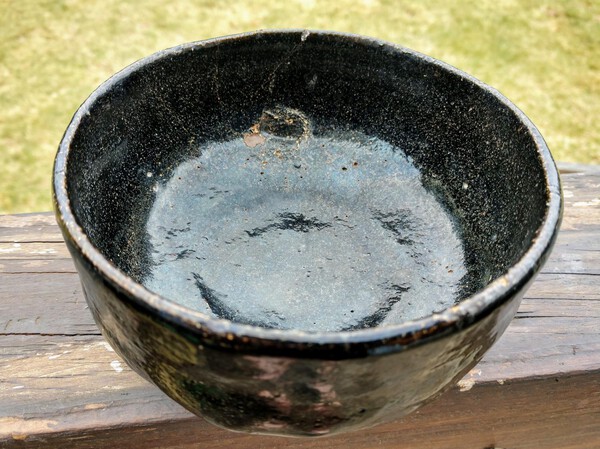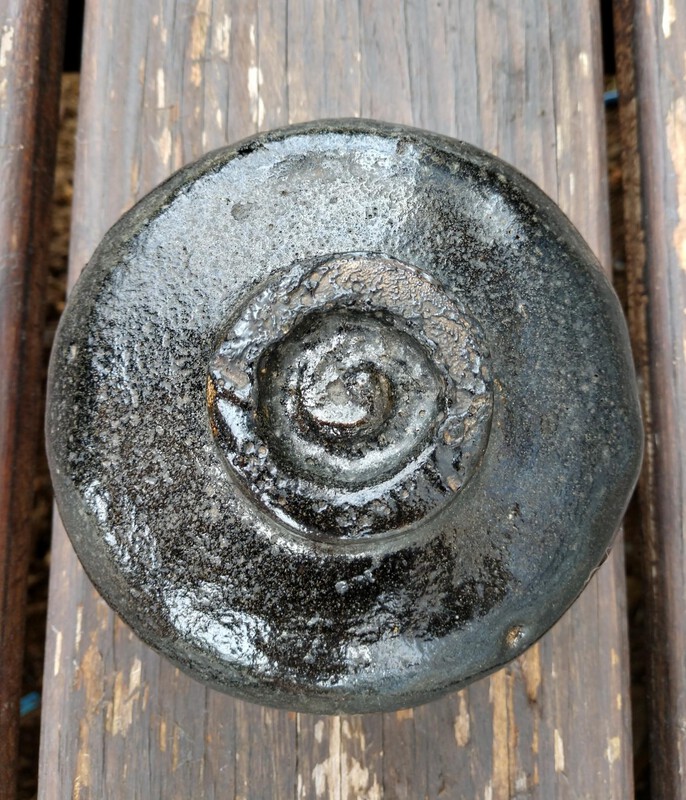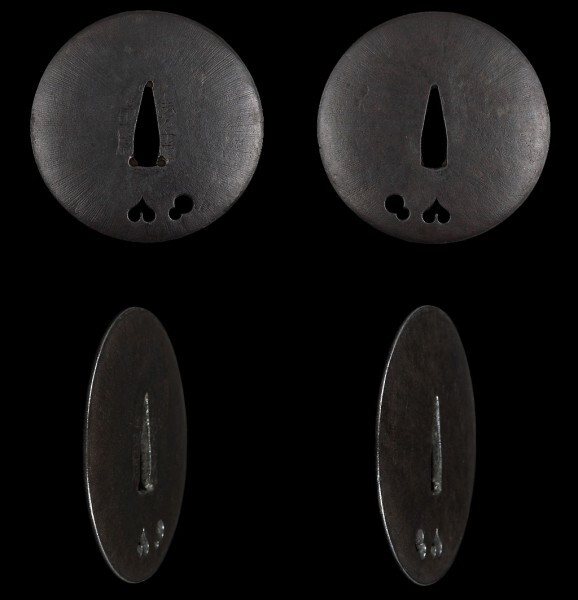Leaderboard
Popular Content
Showing content with the highest reputation on 06/22/2025 in all areas
-
Thanks, let me explain more about the design I chose. Maybe it's hard to see from the pictures, but the plate is concave, that and the shape of the cross with the amida yasuri makes it feel like the cross is embracing the viewer when seeing it in hand. The raised mimi gives a more powerful look overall. On the back the bold "INRI" (traditionally found in representations of the crucifixion) engraving is meant to be seen mainly by the wearer. The hitsu ana are filled with brass and shaped as the globus cruciger (cross-bearing orb) which represents the power of Christianity over the world. The etching on the mimi has the sentence "in nomine patris et filii et spiritus sancti" (In the name of the Father, the Son, and the Holy Spirit) and the placement of the cross on the mimi Is exactly where the wearer would rest his thumb when ready to unsheat the blade. I hope this explanation will make you appreciate it a little more 😄5 points
-
4 points
-
I think it has good looking shape and size. If the motohaba is indeed 3,5 cm it is impressive. I am on my personal quest to see as many ōdachi as I can in Japan. They are however very rare. Visting shrines, museums etc. I have come to realize that many of the big wide Nanbokuchō blades have been tachi of c. 80 - 90 cm. These are also amazing swords and I am blessed to see so many of them. The tricky question then arises when you see that there are lots and lots of supposedly ō-suriage mumei blades that are 70+cm. Were they originally ōdachi of 90+cm or were they very large tachi of 80 - 90 cm. Of course the Japanese experts know so much more than me. The real thing is that learning possibilities in Japan for sword study are just so much beyond anywhere else. I understand it more clearly every year, and I would be quite cautious about challenging the views of Japanese experts. I would instead try to learn how they arrive to their conclusion. Unfortunately all of this is just personal speculation of mine that I am basing to the surving ubu signed and signed suriage tachi examples. This summer in Japan I have also learnt bit more about the rarity of ōdachi and discussed one of those swords more in length with museum staff. Which was amazing but difficult with my weak overall language skill.4 points
-
Hi Brian, Welcome to the fun! Sorry to say that the first piece is a very common cast "replica" - Samurai crossing the river on horseback. There are two versions of this pattern. I would disregard any signature on it as it will be false. Your second one is more promising and would appear genuine if a little worn - not unexpected when you consider its possible age - 200 yrs? This is the other version to yours, the horses head is further under the seppa-dai This one is more like yours from the following thread. This one also has a cast in "tagane-ato" or punch mark at the bottom of the nakago-ana - both versions also can feature this little addition that was meant to "prove" it had been mounted. So two sizes, two versions.4 points
-
I brought a full-length Tensho koshirae back from Tokyo. Got a heavy-duty cardboard cylinder from HANDS (fabulous hardware store in Shinjuku area, they have different lengths and diameters) packed it with popcorn (they have this too) and newspaper, checked it in with the luggage. Arrived safe.4 points
-
As noted Ido Hidetoshi, a competent Seki smith in the Amahide workshop. Examples and his background in this NMB Download:4 points
-
4 points
-
4 points
-
I am not a believer in attribution being strictly reflective of quality, in the very least I have not seen people with such philosophy winning kantei competitions. There are blades which are borderline Shizu/Yamato Shizu, but the majority of contested Yamato Shizu attributions go mainline Yamato as an alternative. Yamato Shizu attribution presumes strong masame below shinogi and relatively calm notare-gunome hamon with kinsuji, but few to no distinctive togari. Accordingly if gunome is quite periodic and the same size an alternative attribution is Shikkakke. If there is something strange (say, strong midare utsuri) an alternative attribution is Senjuin since Senjuin accumulates all unusual options, but also because there are verifiable Senjuin smiths who worked in such diverse styles. The best Kaneuji would be much more itame dominated below shinogi, with nice bright jigane and very powerful and stylistically varied nie activity. The best Yamato Shizu would have, for example, very uniform masame mixed with thick chikei and uniform, consistent nie deki hamon. So Kaneuji and Yamato Shizu's very best can be going into two rather different directions. Yamato Shizu Kaneuji is a rare attribution which can presume this is an early school's (i.e. late Kamakura) blade which supposedly was made by Kaneuji before his switch to Soshu style. There is one challenge is that oshigata signed [Yamato Shizu] Kaneuji show later (1360s) examples,so the notion Kaneuji was first Yamato style and then Soshu is reasonable in theory but might not be very useful in practice. A lot of top class Yamato Shizu works are from 1360s - and so are the ones attributed as "Shizu Kaneuji". Another example of sort of dealer speak when one tries to push the idea of "the earliest, the best, the famous, and the Masamune student" while in fact it is simply a very good blade and the rest is a conjecture upon conjecture.3 points
-
Now I remember why I stopped posting here years ago. All I was trying to do was wish a fellow traveler good luck and approve of their taste. Guess I'll see if people have become less defensive and unpleasant in another 5-10 years.3 points
-
Remains of a 三五桐紋 3/5 paulownia crest mon top right, but heavily filed with rough rasp. Fairly generic tsuba, imho. Can it be narrowed down at all? I wonder…3 points
-
The nakago for such a young blade is also heavily compromised. He made both gendaito and showato so unless you get a window done, it may difficult to make the call of which it is. Condition is everything, so the value will suffer due to the poor state of preservation of the nakago and the blade itself Kanefusa is a 1st seat rikugen, and his blades are prized, so that is the upside. Value is hard to call due to the condition but good gendaito is decent old polish start around $2500. Showato in decent shape are about $1500. You won't see either of those values without restoration. You're unfortunately looking at not a lot past $500-600 as it sits. This blade might be worth putting in front of a trained Japanese sword polisher (togishi) for evaluation. But the nakago would probably put this in the "passion project" category. If its important to your family, see about restoration, keep it and treasure it. Regardless, do not do anything to the blade yourself except keeping the edge gently oiled with a light mineral oil or choji oil.3 points
-
Hello, My name is Brian and I have just gotten into tsuba collecting. I recently picked up two pieces from a flea market in Japan and would greatly appreciate help identifying and verifying the tsuba. The first tsuba has a mei, does anyone recognize it? Any suggestions or advice would be greatly welcomed. Thanks,2 points
-
2 points
-
So you worry about the ramblings of one single person who is known to be that way? You must live a very cloistered life if you worry about what a solitary clump of pixels says on the internet. Suggest never leaving the house. C'mon man. Ignore him like the rest of us do.2 points
-
2 points
-
I doubt anyone can tell who made a mumei one anyway. To me, if the condition is great, the era sound about right and the blade speaks to me then yes.2 points
-
His browser wasn't loading the "capcha" below that question. Probably hasn't updated it in a while. That's why I always recommend trying a different browser. Since they are free, on my own pc's I always have Edge, Firefox, Chrome and Opera installed. You'd be surprised how often I have to use different browsers for different reasons. Glad he came right.2 points
-
I will stay away from answering that question - but if you enjoy a day reading then see this thread - https://www.militaria.co.za/nmb/topic/38416-tsuba-casting-molds/ Let's just say these cast pieces do turn up from collections at the beginning of the 20th century and that they are "antiques". But we think they were rarely used on swords other than tourist pieces or swapped over onto older blades. Your other guard I can't be sure of a school or date, but looks genuine to me. There is a solitary Kiri flower amongst the tendrils/branches [paulownia tree?] 1 o'clock position. Piers beat me to it.2 points
-
2 points
-
Munechika Most likely a reference to the famous smith Sanjo Munechika (but this is not an authentic example of his mei).2 points
-
2 points
-
Gracja, this is probably a very early war sword made in Seki. The nakago (hilt) is badly rusted, and there are probably some extra kanji further up. It is likely to be: 濃州関住二十三代藤原兼房作之 Noshu Seki ju Nijusan Dai Fujiwara Kanefusa saku kore "Fujiwara Kanefusa 23rd generation of Seki, Mino (Noshu) made this. His family name was Kato and given name Koichi. A good quality smith. Maybe hidden up under the tsuba is a stamp (maybe a sakura flower?).2 points
-
2 points
-
If that's what you're saying, Shirasaya originated in the mid-Edo period when the Honami family of appraisers were employed to evaluate, authenticate, and index the sword collections of important families. So what was done in the past to protect and preserve the sword? How were swords preserved from the Kamakura period onwards?2 points
-
I think the dude's name is HIDETOSHI, but I'm not sure about the rest of what he wanted us to know. P2 points
-
Gendaito, in the collecting sphere are blades that are between 1880ish and 1945. Anything after that is a Shinsakuto, aka modern. These blades are not gendaito and probably Chinese made. Boshi looks too awkward to be proper Japanese also.2 points
-
"Arrampicar(si)" . New verb to me. I'd say "arguing with yourself in the mirror". [or beating yourself up in the mirror?] I've long been tired of this thread. I'll consult with Brian about locking it. For now, posts stay up. I don't want to be censuring any more than I must. --- Everyone go back to their corners and sit down ---. Don't make me power up the cattle-prod.2 points
-
2 points
-
With Shinshinto, you do need to be a bit selective as there were a lot of not so artistic smiths just making blades to get by. However, you can run across beauties like this: Obviously, the smiths who had the time and wherewithal to imitate, study, and expand upon their Koto masters were the best: Kiyomitsu, Sadakazu, Kanesada to name a few. I'd argue that the relative recentness of these works makes it more relevant to study them while the items and the history is still easier to preserve. Given time, all things wither and disappear under the sands.1 point
-
1 point
-
The best shinshinto is typically imitation of Soshu - can be Naotane, Naokatsu, Kiyomaro. I personally would consider Naokatsu to be most affordable of the three, with quality often superior to Naotane. Kiyomaro's best works are shinshinto's very best, but he also made some rather coarse stuff where the goal was basically make it as koto as possible and there are a few simply failing to reach the top grade.1 point
-
1 point
-
1 point
-
Daihannya is an amazing sword 🤩 However I must admit I didn't really understand the Nakatsukasa Masamune 😅1 point
-
1 point
-
What makes you question if the tagane- ato are real? Thanks for sharing the link of the river crossing will definitely be reading more into castings.1 point
-
1 point
-
1 point
-
Shirasaya originated in the mid-Edo period when the Honami family of appraisers were employed to evaluate, authenticate and index the sword collections of important families. These families had many swords in almost permanent storage and so shirasaya were regarded much like the magnolia boxes used to protect valued tea utensils such as bowls and teaspoons. As with these other wooden containers, the Honami would write formal descriptive calligraphy onto the plain white wood. Then, following the Meiji Restoration, and the subsequent abolition of wearing swords in 1876, shirasaya became a necessity.1 point
-
Brought back a koshirae from San Francisco to SA. Also was frustrated that no matter how I tried, it would not fit in the luggage. So had to go buy one of those shipping cardboard tubes from a stationary store and some bubble wrap. Then had to declare it as a separate item of luggage and pay about $100 for it. Second airline (was a multi stop trip) I explained to the lady what it was, and she checked it in without the charge. So depends on the person at the desk, but this is the way. It arrived with no damage. Except there was the panic when we arrived that it didn't come through with the luggage...and after an hour we thought it was missing. At the missing luggage station, someone asked if we had checked the separate pile of luggage where they unload oversized packages and luggage. After finding this unknown area, there it was.1 point
-
And in september I'm going to V&A (in my opinion the best museum in London). Blue gloves, 1 dragon and 1 snake. Today I looked closely at a lobster, a work of art. I'll never reach such a level. I liked the dragon the most. It seems to be within my reach in a few years1 point
-
1 point
-
Another great event and certainly exceeded last years, both in terms of number of dealers (several new faces in the booths from Japan and Australia) and range of blades, with a little more emphasis on Koto. Many Juyo papered blades were available for sale too. There was a booth demonstrating urushi polishing and a separate room featuring the work of a calligrapher. Yes, I would agree a few more lectures covering a wider variety of Japanese culture would encourage greater attendance by the lay person. Maybe a tea ceremony demo would be a nice idea. Its a shame the event is poorly attended by the NBTHK-EB members. The more support it gets the more likely it is to continue. Europe sorely needs the Japan Art Fair. Congrats to Henk and Daisuke san for organizing this annual 3 day expo which seems to grow in strength with increasing years. I plan to be there next year too. Did anyone get their blade(s) shinsa'ed on the Sunday? How did that go?1 point
-
Visited for the first time, beautiful event in an equally beautiful and exclusive location, very helpful and friendly dealers, I sincerely hope that this event will be maintained because we desperately need it in Europe, hope that the dealers have also done good business because in the end a lot also depends on this. I see the format itself as centered but in a growth perspective it would be interesting to integrate more laboratories / lectures also in general on Japanese culture that can attract a more varied audience. The blade posted by Luc is a Gassan Sadanobu was exhibited together with 3 other Gassan including an Sadakazu Odachi for the very interesting lecture held by Simone di Franco on the Gassan school, obviously magnificent horimono as per Gassan tradition. Regarding possible purchases the offer was varied with both entry level and high level pieces, especially for entry level I saw several interesting pieces compared to the asking price so I strongly suggest to those who are thinking about their first purchase to come to the next edition. @Jussi Ekholm I thought of you when I saw this , never seen so many ana.. PS: sorry for the low quality photos but I didn't want to be too annoying towards the dealers... Giordy1 point
-
Here's a special order blade by Minamoto Moritaka (rated 2 million yen, high to superior gendaito according to Slough). Signed in tachi mei: "Koteki Mu Kotsu Minamoto Moritaka + Kao" / "Oujyu Mitsuda Jirou Shi Saku" / "Kigen Ni Sen Roppyaku Ni Nen Ju Ichi Gatsu" "Our enemy has no backbone" / "Made at the request of Mr. Mitsuda Jirou" / November 19421 point
-
1 point
-
Interesting discussion here... Just to add to the mix, here is a photo of a later-generation Hoan (Kanenobu? Kaneshige?). It features a similar amida-yasuri to the tsuba in question, as well as an even more pronounced go-stone shape. I wonder if this style wasn't simply a popular one for several schools to produce at a particular point in the early-Edo period... Cheers, Steve1 point
This leaderboard is set to Johannesburg/GMT+02:00



